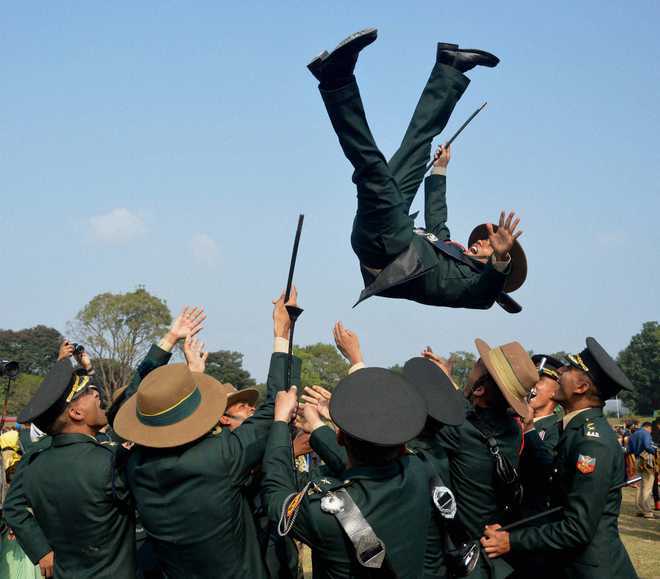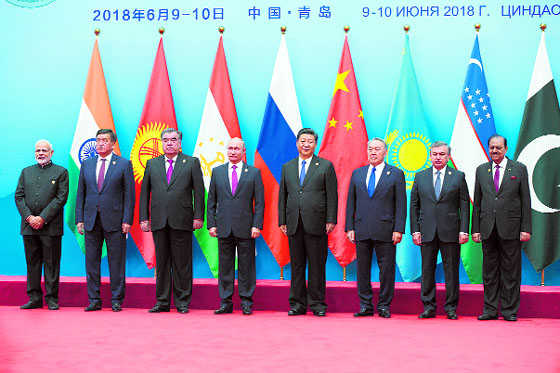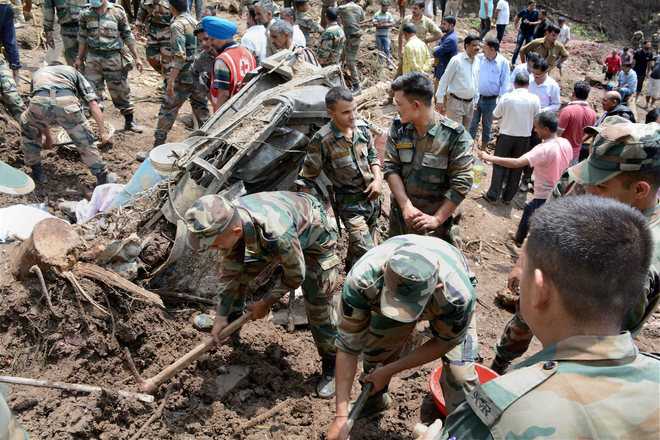
The Army’s quest to replace INSAS began after Kargil when soldiers reported jamming, heavy recoil and cracked fibre glass magazines in the weapon.
New Delhi: In two weeks from now a factory near the Chambal ravines in Madhya Pradesh will fashion a bullpup. A bullpup is a rifle with a short barrel, its magazine located behind the pistol grip.
In the same time, a team of nine officers from the Indian Army will be globe-trotting in search of a rifle, from the US to Australia.
Guns being made in the Chambal, notorious through the 1970s and the 1980s for dacoits wielding country-made firearms, kattas, is old hat.
Yet, when the Tavor X95 carbine is rolled out from the first private sector small arms factory at Malanpur near Gwalior by a joint venture between Punj Lloyd and Israel Weapons Industries (IWI) named Punj Lloyd Raksha Systems, it will frame a picture that is at once a snapshot of failure as it is promissory.
“The long-term potential market for rifles in India is about 4 million pieces spanning the armed forces and the services under the ministry of home affairs,” says Ashok Wadhawan, president (manufacturing), of the company. “Right now we are looking at the immediate orders for which the search committee will also be visiting Israel.”
Israel did not exist when India formally started making rifles by the banks of the Hooghly at Ishapore near Calcutta in the early 20th century. The search committee that last week began globe-trotting to choose an assault rifle in the latest drive to replace the Insas 1B1, will be given a demonstration of the Galil by the IWI in Israel.
Wadhawan’s company began operations last year mainly as an exporter of components for assembly by the IWI of Tavor, Galil and Negev guns back home in Israel. The Tavor X95 bullpup it is now fashioning would be its first complete firearm “only for our internal purposes”, he said.

The nine-member Indian Army team will be visiting, apart from Israel, the US to evaluate the M series, Australia for the F90 family, the UAE, to test the Caracal 817AR, and South Korea to check out the S&T Motiv (formerly S&T Daewoo) offering.
Dissatisfaction
The Army’s quest to find a replacement for its standard issue rifle, the INSAS, began shortly after the 1999 Kargil war when soldiers reported jamming, heavy recoil and cracked fibre glass magazines in the weapon.
Despite improvements claimed by the Ordnance Factory Board (OFB) and the Defence Research and Development Organisation (DRDO), the Army was not satisfied. It rejected the OFB’s latest offering, named the Excalibur.
The inability of India’s defence industry to make a modern rifle is matched by the Army’s tardiness in deciding what it really wanted and the government’s tight-fistedness in giving the funds.
The projected requirement for the army is 7 lakh assault rifles, 4.4 lakh carbines and 41,000 light machine guns. It issued a first request for information to about 12 foreign vendors in 2011. Even after the RFI, the Army toyed with the idea of a rifle capable of firing two different calibres of bullets – the lighter 5.56mm and the heavier but more lethal 7.62mm – from modular, interchangeable barrels.
It dropped the idea in February. The Army chief, General Bipin Rawat, also settled the issue of numbers, slashing them from the original projection to 94,000 assault rifles, 72,000 carbines and 17,000 LMGs.
“It has taken us a while but we have decided on what we need,” a senior infantry officer told ThePrint. The assault rifle is now required to have a range of at least 500 metres and the carbine 300 metres. The numbers have also been decided on the assumption that only 60 per cent of an infantry battalion (of about 800-900 soldiers) are tasked with engaging in direct combat while the others are in supporting roles.
The Indian Army has 382 regular infantry battalions and 60 other combat battalions (mechanised, armoured, scouts).
The modern assault rifles and guns with the longer range of 500m would be issued to those tasked in direct combat within each battalion. The others would be equipped with rifles/carbines of the shorter 300m range. Both would fire 7.62mm bullets.
The AK legacy
For decades, the Indian Army has used the AK-series – and many soldiers even now prefer the AKs to the INSAS – but the search committee will not be visiting Russia. This may be surprising because the Avtomat Kalashnikov (AK)-47 and its variants, products of the early years of the Cold War, are the most widely used firearms by state forces and insurgents alike.
“My thinking is, since a state-of-the art assault rifle will cost about Rs 2 lakh each in the global market, let us issue these only to frontline infantry soldiers who confront the enemy armed only with their rifles,” the Army chief, General Bipin Rawat, explained just before Army Day (15 January) this year. “Let us provide a cheaper indigenous option to other soldiers for whom the rifle is not a primary weapon,” he said.
So is India, Russia’s strategic partner, abandoning that legacy? Not yet. The Army believes that the latest version, the AK-103, could fit the bill for its soldiers in supporting arms and those not directly tasked with engaging the enemy. The AK-103, which may be produced again under license by the Ordnance Factory Board (OFB) could well be the “cheaper, indigenous option” the Army chief was suggesting.

For the assault rifles, the selected vendor would have to supply the consignment with night vision devices within 28 months of contract under the “Fast Track Procedure” of the latest Defence Procurement Policy. All of this would be possible if the Army does not change its mind again and the government sticks to a timeline.
Till such time, bullpups in the land of kattas will remain a chimera for the military in a country that has made guns for more than a century.






































































